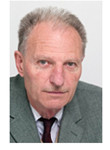Design of dynamic task offloading method in multi cloud MEC environments using deep learning
Abstract
This research paper presents a ground-breaking approach to enhancing mobile healthcare applications through the design of a dynamic task offloading method in multi-cloud mobile edge computing (MEC) environments, leveraging the capabilities of deep learning. The primary objective is to address the limitations of existing systems, notably the constraints in computational resources and power efficiency in mobile devices, while ensuring data privacy and high accuracy in tasks like ECG analysis and brain tumor segmentation. The methodology introduces a novel hybrid task offloading (HTO) framework, ingeniously designed to dynamically allocate computation-intensive tasks between edge and cloud servers. This approach optimizes task distribution based on real-time analysis of workload and resource availability, ensuring efficient utilization of computational power. The deep learning aspect of the study utilizes advanced neural network algorithms to process complex datasets with high precision. Findings from the research reveal significant improvements in various performance metrics. Notably, there is a marked reduction in latency and energy consumption, which are critical in mobile healthcare applications. The HTO method demonstrated an enhanced efficiency in task offloading, achieving a balance between power consumption and computational speed. This balance is crucial for real-time data processing in healthcare scenarios. The achievement of this research lies in its potential to revolutionize mobile healthcare services. By reducing the latency by up to 30% and enhancing energy efficiency significantly, the HTO framework paves the way for more responsive and sustainable healthcare applications. These improvements are vital for real-time health monitoring and emergency response scenarios, where every second counts. Overall, this study contributes a significant advancement in the field of mobile healthcare, proposing a scalable and efficient solution for handling the increasing demands of computation in healthcare applications.
Keywords
Full Text:
PDFReferences
1. Vaswani A, Shazeer N, Parmar N, et al. Attention is all you need. Advances in neural information processing systems, 2017.30.
2. Liu M, Shao N, Zheng C, et al. Real Time Arrhythmia Monitoring and Classification Based on Edge Computing and DNN. Duan W, ed. Wireless Communications and Mobile Computing. 2021; 2021: 1-9. doi: 10.1155/2021/5563338
3. Awal MA, Mostafa SS, Ahmad M, et al. An adaptive level dependent wavelet thresholding for ECG denoising. Biocybernetics and Biomedical Engineering. 2014; 34(4): 238-249. doi: 10.1016/j.bbe.2014.03.002
4. Ceylan R, Özbay Y, Karlik B. A novel approach for classification of ECG arrhythmias: Type-2 fuzzy clustering neural network. Expert Systems with Applications. 2009; 36(3): 6721-6726. doi: 10.1016/j.eswa.2008.08.028
5. Fausett LV. Fundamentals of neural networks: architectures, algorithms and applications. Pearson Education India. 2006.
6. Meau YP, Ibrahim F, Narainasamy SAL, et al. Intelligent classification of electrocardiogram (ECG) signal using extended Kalman Filter (EKF) based neuro fuzzy system. Computer Methods and Programs in Biomedicine. 2006; 82(2): 157-168. doi: 10.1016/j.cmpb.2006.03.003
7. Yu SN, Chen YH. Electrocardiogram beat classification based on wavelet transformation and probabilistic neural network. Pattern Recognition Letters. 2007; 28(10): 1142-1150. doi: 10.1016/j.patrec.2007.01.017
8. Übeyli ED. Recurrent neural networks employing Lyapunov exponents for analysis of ECG signals. Expert Systems with Applications. 2010; 37(2): 1192-1199. doi: 10.1016/j.eswa.2009.06.022
9. Dutta S, Chatterjee A, Munshi S. Identification of ECG beats from cross-spectrum information aided learning vector quantization. Measurement. 2011; 44(10): 2020-2027. doi: 10.1016/j.measurement.2011.08.014
10. Pati A, Parhi M, Pattanayak BK. HeartFog: Fog Computing Enabled Ensemble Deep Learning Framework for Automatic Heart Disease Diagnosis. In: Mishra D, Buyya R, Mohapatra P, Patnaik S. (editors). Intelligent and Cloud Computing. Smart Innovation, Systems and Technologies, Springer, Singapore. 2002.
11. Raju KB, Dara S, Vidyarthi A, et al. Smart Heart Disease Prediction System with IoT and Fog Computing Sectors Enabled by Cascaded Deep Learning Model. Bhardwaj A, ed. Computational Intelligence and Neuroscience. 2022; 2022: 1-22. doi: 10.1155/2022/1070697
12. Akrivopoulos O, Amaxilatis D, Mavrommati I, et al. Utilising fog computing for developing a person-centric heart monitoring system. Journal of Ambient Intelligence and Smart Environments. 2019; 11(3): 237-259. doi: 10.3233/ais-190523
13. Ram SS, Apduhan B, Shiratori N. A Machine Learning Framework for Edge Computing to Improve Prediction Accuracy in Mobile Health Monitoring. Computational Science and Its Applications. Lecture Notes in Computer Science, Springer, Cham. 2019.
14. Rincon JA, Guerra-Ojeda S, Carrascosa C, et al. An IoT and Fog Computing-Based Monitoring System for Cardiovascular Patients with Automatic ECG Classification Using Deep Neural Networks. Sensors. 2020; 20(24): 7353. doi: 10.3390/s20247353
15. Moghadas E, Rezazadeh J, Farahbakhsh R. An IoT patient monitoring based on fog computing and data mining: Cardiac arrhythmia usecase. Internet of Things. 2020; 11: 100251. doi: 10.1016/j.iot.2020.10025
16. Abdellatif AA, Mohamed A, Chiasserini CF, et al. Edge Computing for Smart Health: Context-Aware Approaches, Opportunities, and Challenges. IEEE Network. 2019; 33(3): 196-203. doi: 10.1109/mnet.2019.1800083
17. Awad AI, Fouda MM, Khashaba MM, et al. Utilization of mobile edge computing on the Internet of Medical Things: A survey. ICT Express. 2023; 9(3): 473-485. doi: 10.1016/j.icte.2022.05.006
18. Firouzi F, Farahani B, Panahi E, et al. Task Offloading for Edge-Fog-Cloud Interplay in the Healthcare Internet of Things (IoT). 2021 IEEE International Conference on Omni-Layer Intelligent Systems (COINS). Published online August 23, 2021. doi: 10.1109/coins51742.2021.9524098
19. Amini V, Momtazpour M, Saheb Zamani M. An energy-efficient and accuracy-aware edge computing framework for heart arrhythmia detection: A joint model selection and task offloading approach. The Journal of Supercomputing. 2022; 79(8): 8178-8204. doi: 10.1007/s11227-022-04987-2
20. Mutlag AA, Abd Ghani MK, Arunkumar N, et al. Enabling technologies for fog computing in healthcare IoT systems. Future Generation Computer Systems. 2019; 90: 62-78. doi: 10.1016/j.future.2018.07.049
21. Tuli S, Mahmud R, Tuli S, et al. FogBus: A Blockchain-based Lightweight Framework for Edge and Fog Computing. Journal of Systems and Software. 2019; 154: 22-36. doi: 10.1016/j.jss.2019.04.050
22. Pradeep G, Ramamoorthy S, Krishnamurthy M, Saritha V. Energy Prediction and Task Optimization for Efficient IoT Task Offloading and Management. International Journal of Intelligent Systems and Applications in Engineering. 2023; 12(1s):411–427.
DOI: https://doi.org/10.32629/jai.v7i5.1367
Refbacks
- There are currently no refbacks.
Copyright (c) 2024 Sandhya Tatekalva, Yamuna Ravuri, Sirish Kumar Maddipatla, Usha Rani Macigi
License URL: https://creativecommons.org/licenses/by-nc/4.0/







